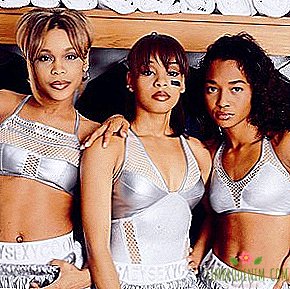Greens, water and no cola: How to make an office healthy
Now the world is entering the second phase of "environmental design" - and if the first was aimed at reducing harmful emissions, saving resources, caring for nature, the second focuses on the health and well-being of people. The average life expectancy is increasing, and the age of the population is increasing, and the improvement of medical care alone is not enough. New ways are needed to keep people active and reduce the burden on health care structures. The way indoor environment affects people has long been underestimated - and, according to environmental psychologist Judith Hervagen, the design of animal enclosures for animals in zoos is spent more time and effort than designing offices. At the same time, a modern person spends 90% of the time in the room, and 70% of the premises are capable of causing damage to health. This is due to ignoring the physical and psychological needs of the building design process.
In 2014, the International WELL Building Institute (IWBI) launched the first world standard for premises, aimed at maximizing the comfort of the person in them. The standard is based on the results of six years of studying patterns of behavior, demographic parameters and psychology. Seven concepts were developed relating to different aspects of the effects on the body: air, water, nutrition, light, physical activity, physical comfort and psychological well-being. For many companies, compliance with this standard is also an opportunity to retain employees, because with a sufficiently high salary, comfort and emotional well-being begin to play a smaller role in choosing a place to work. We understand how it works and which companies have already begun to care about air quality and the possibility of meditation for employees.

Contaminated air increases the risk of death: according to WHO, it is the cause of 5.4% of all deaths in the world. And this applies not only to car exhaust on the streets: with poor ventilation, the level of carbon dioxide increases, which negatively affects cognitive functions and well-being. Employees begin to suffer from headaches, distracted attention, become irritable and unable to concentrate. Poor quality air breathes 80% of the world's inhabitants - and this problem is especially pronounced in cities with low or medium income. As often happens, the problem begins to be solved not where it is particularly acute: while the WELL standards use large structures with large revolutions.
The Delos office in New York is an example of a space that has undergone special certification: there are several steps to filter air from dust and chemical pollutants. This is not enough: in all rooms, automatic monitoring of the carbon dioxide level is constantly taking place, and when the threshold value is exceeded, ventilation is automatically turned on. Of course, the easiest way is to improve the air quality by opening the windows and airing - but the air outside may also not meet the standards. At the same office, Delos constantly monitors the composition of the air outside the window, and if the level of pollutants is exceeded, the system will recommend closing the windows. And of course, there is a ban on smoking inside the building and in its immediate vicinity.
The current recommendations for fluid intake are 2.7 liters for women and 3.7 liters for men per day, and water is taken into account from all sources, including solid food and soft drinks. The quality of drinking water is important for health, and if the water is tasty and easily accessible, there is a greater chance that a person will drink the required amount. It is because of taste that many people prefer bottled water, even if tap water is safe to drink - but unfortunately, bottles inevitably lead to the accumulation of plastic waste.
Thus, the construction company Structure Tone has turned its headquarters in New York into a space that is comfortable for employees: drinking fountains are installed in a huge (seven and a half thousand square meters) room every fifteen meters, and the water is additionally filtered to improve taste. They also hold seminars on the benefits of water and installed systems, and give out reusable drinking bottles for free.
If the introduction of new standards in relation to water and air, employees usually perceive positively, then innovations in matters of food do not like everyone. One of the leaders of Structure Tone said that changes in food policy were perceived as an attempt to control lifestyle and limit freedom of choice. WELL actively promotes the consumption of fruits and fresh vegetables and introduces a ban on the sale of products or drinks containing more than thirty grams of added sugar per serving. Most of carbonated and energy drinks, desserts and sweets are banned. Sometimes firms compromise and leave in an office cafe, for example, a cola, but in small portioned banks to meet the requirements. True, soda is quickly becoming unpopular: people's taste habits change due to the reduced use of added sugar.
A sedentary lifestyle and unhealthy diet are the most important risk factors for cardiovascular diseases, malignant tumors and diabetes. Obesity increases mortality from non-communicable diseases - and they can be prevented by keeping track of nutrition and mobility. In the cafe of the headquarters of Structure Tone, there is always a choice of fresh vegetables and fruits, half of the drinks contain a minimum of sugar, and there are no trans-fats in the products. In addition, the cafe has gadgets with which each employee can follow his diet.

In 2017, three American scientists (Jeffrey Hall, Michael Rosbash and Michael Young) received the Nobel Prize in Medicine for studying the influence of circadian rhythms on the quality of human life. Circadian rhythms help maintain stable hormone levels, regulate sleep, emotional background, body temperature and metabolism. Chronic circadian rhythm disorder increases the risk of obesity, depression, myocardial infarction, stroke, and arterial hypertension. Light influences the circadian rhythms - natural and artificial. Since people spend most of the day indoors, the reason for disturbances in the daily rhythm may be insufficient, poor quality, or even excessive lighting.
Some offices - for example, CookFox Architects in New York or Adobe in California - solve the problem of lighting radically, designing open terraces and gardens and encouraging employees to work outdoors, in natural light and surrounded by plants. When building an office from scratch, light aspects can be taken into account even at the design stage; for example, in the new E & J Gallo Winery Dry Creek office windows are made so that the sun's rays penetrate deep into the room. The glass atrium in the CBRE'S workplace 360 office, designed by Gensler, the height of the entire building also helps to maximize the use of daylight.
The WELL standard introduces the so-called right to light - according to it, 75% of the desktops should be located no more than seven and a half meters from the windows facing the street. In order to maximize the use of daylight, the materials of walls, ceilings and furniture are also separately thought out - they must be light. If the architecture of the building does not allow sunlight to easily penetrate into all corners, programmable LED lamps come to the rescue - they can be used to simulate natural changes of light during the day, from bluish in the morning to yellowish at sunset.
The global recommendations of WHO and other reputable organizations on physical activity are at least 150 minutes of moderate aerobic exercise (for example, five times for half an hour) and at least two strength training sessions per week. Some companies stimulate employee activity by paying (partially or fully) fitness club subscriptions and activity trackers, invite coaches for regular workshops or simply open halls for sports in the offices (such as Adobe).
Another way to keep employees on the move is to install parking spaces for bicycles near the office, and to equip a shower and a place to change clothes in the office itself. When designing offices, more attention is now paid to the stairs: if earlier they were installed as emergency exits to comply with fire regulations, now the stairs are beautiful and wide, encouraging employees to climb stairs, for example, in a cafe.
In 2015, Natural Climate Change magazine raised the issue of women who are freezing in office space due to air conditioner settings. It turned out that the standard of office temperature has not changed since 1960 and was based on studies of the metabolism of a forty-year-old man weighing 90 kilograms. While disputes continue in most offices (one is hot, others are about to blow), the new system offers employees to choose a convenient place among several climatic zones every day - that is, the table assigned to each one may simply not be there.
According to a survey of CBRE 360 Workplace employees, 83% reported that the new office makes them more productive, and 92% said that their health and well-being had improved. In addition to comfortable temperature control, 30% of the tables in the office should be height adjustable so that a person can work sitting or standing. And of course, the prerequisite of the standard is a barrier-free environment for people with disabilities.

The state of our body affects our emotions, and our emotional state affects our health. Curved shapes that mimic rocks, trees, or animals were exploited by Gaudi a hundred years ago, and now the co-founder of the architectural bureau CookOffice Architects claims that the presence of natural elements in design correlates with improved productivity and a decrease in the number of days spent at the hospital. At the office of this company, everything is buried in verdure: flower pots are placed on the tables and between the tables, and the plants are hanging from the ceiling. The Amazon office in Seattle is a few huge futuristic biospheres overlooking the city. Each biosphere is a park with tens of thousands of plant species, waterfalls, and meeting rooms in tree houses.
Another source of positive emotions is art; The new Etsy office, a well-known internet site for the sale of handicrafts and vintage, includes 600 handcrafted tables and 750 piece designer items, and the walls are decorated with graffiti and painted panels, the themes of which correlate with the company's values.
Of course, one of the main conditions for the psychological well-being of a person is the right to healthy sleep. Companies Google, NASA, Samsung, The Huffington Post, Proctor and Gamble installed in the offices of EnergyPods, special chairs for a short nap. They are equipped with a special sound and visual accompaniment, facilitating the process of falling asleep. The Adobe office uses other Somadome chairs designed for meditation (they can also relax and sleep). Volunteer work has a positive effect on psychological well-being: participation in charitable projects increases self-esteem, brings a sense of self-worth and develops social ties. WELL recommends that companies provide their employees with eight hours of paid time for volunteer work twice a year.
Photo: Gensler (1, 2), Structure Tone




